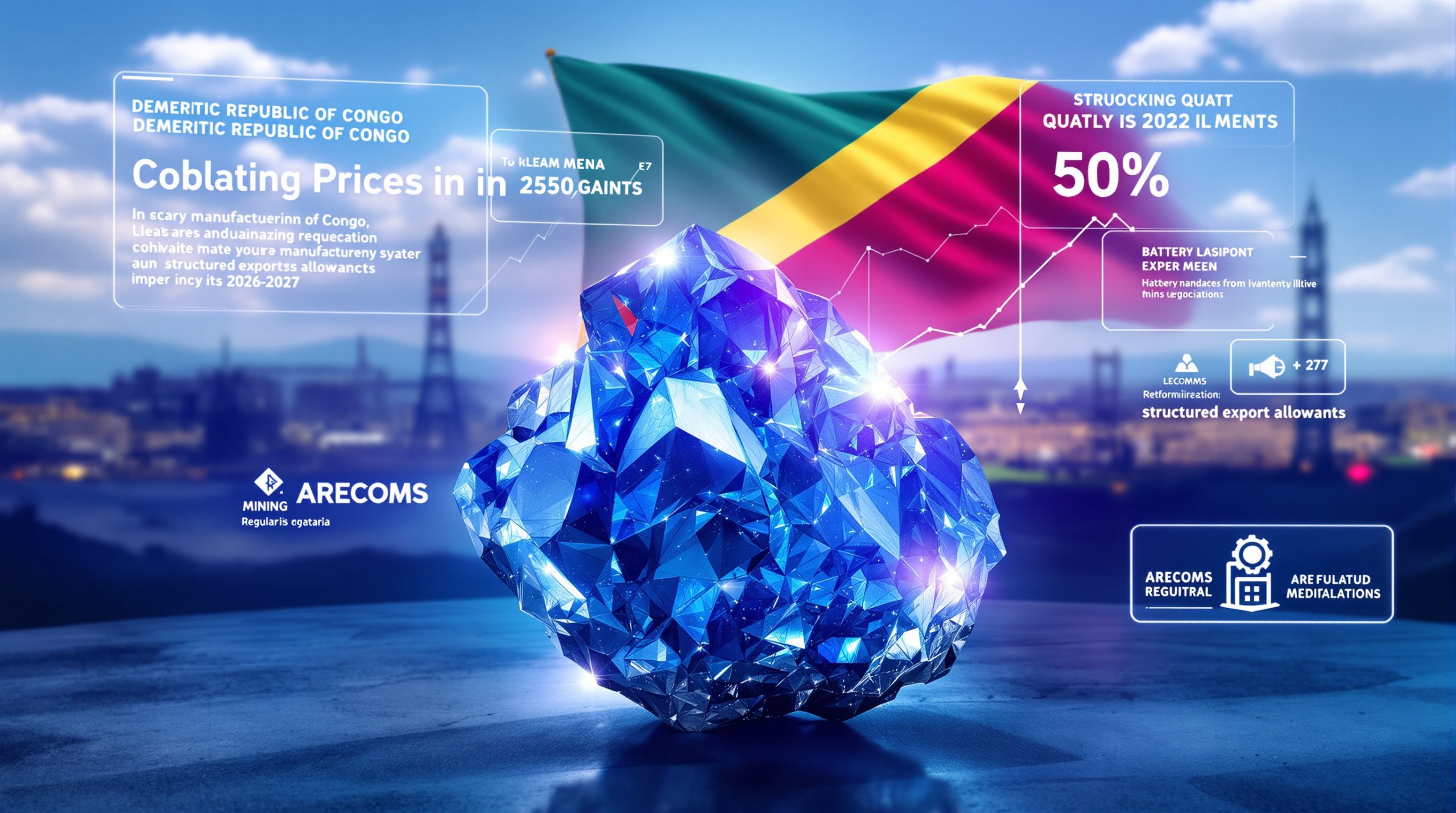Rare Earth Revolution: Inside Lynas' Strategic US Magnet Partnership
Breaking China's Rare Earth Monopoly: Market Context and Challenges
The strategic alliance between Lynas Rare Earths and Noveon Magnetics marks a watershed moment in global rare earth supply chains. With China controlling approximately 85-90% of global rare earth processing capacity as of 2024, this partnership aims to create an independent, fully traceable supply chain for rare earth permanent magnets within the United States. The non-binding memorandum of understanding (MoU) signed in October 2025 establishes a framework that addresses immediate US economic and national security concerns in this critical minerals energy security.
The United States currently imports approximately 74% of its rare earth compounds and metals, with China being a primary source. This dependency has created significant vulnerabilities in the supply chain, particularly as China has implemented export controls on rare earth processing technologies and strategic minerals.
"The time to act is now, and this partnership delivers what the market and the US Government need most: capacity, certainty, and speed," noted Scott Dunn, CEO of Noveon Magnetics, emphasizing the urgency behind this strategic collaboration.
Creating a Fully Traceable "Mine-to-Magnet" Supply Chain
The Lynas rare earth magnets partnership aims to establish complete transparency throughout the entire value chain. This includes traceability from mining operations in Australia through separated rare earth oxide production to finished magnet manufacturing in the United States. This level of supply chain visibility addresses growing concerns about material origin and production standards that have become increasingly important for both regulatory compliance and end-user requirements.
Key elements of this traceable supply chain include:
- Verified material sourcing from Lynas' Mount Weld mine in Western Australia
- Documented processing at established facilities
- Transparent manufacturing protocols at Noveon's US facilities
- Chain-of-custody certification throughout the supply chain
- End-to-end quality assurance and verification
Amanda Lacaze, CEO and Managing Director of Lynas Rare Earths, highlighted this advantage: "By combining our world-class rare earths mining and processing expertise with Noveon's proven downstream manufacturing capabilities, we can provide immediate and practical support to US manufacturers."
Immediate Impact vs. Long-Term Development: Why This Partnership Differs
Unlike many rare earth initiatives that require years of development and billions in investment before production, the Lynas-Noveon partnership leverages existing operational capabilities to deliver immediate results. Both companies emphasize that their collaboration addresses current needs rather than offering distant solutions.
"Together, we can offer a total solution today, not five years from now, that meets immediate US economic and national security needs," explained Dunn, contrasting this approach with other industry initiatives that often promise production capabilities several years into the future.
This immediacy stems from several key factors:
- Lynas operates active mining and processing facilities with nameplate capacity of approximately 12,000 tonnes per annum of rare earth oxides
- Noveon maintains established manufacturing operations for sintered rare earth magnets
- Both companies have existing customer relationships and market presence
- The partnership builds on current production rather than requiring new facilities or technologies
Who Are the Key Players in This Landmark Partnership?
Lynas Rare Earths: Australia's Critical Minerals Champion
Lynas Rare Earths holds a unique position in the global rare earth market as the only commercial producer of separated rare earths outside of China. The company operates the Mount Weld mine in Western Australia, which contains significant concentrations of neodymium and praseodymium, along with processing facilities in Malaysia.
This distinctive market position enables Lynas to provide a reliable supply of both light and heavy rare earth materials critical for high-performance magnet production. The company's established operations and expertise in rare earth processing form a cornerstone of the partnership's capability to deliver immediate supply chain solutions.
Lynas brings several strategic advantages to the partnership:
- Proven mining operations at Mount Weld, one of the world's richest rare earth deposits
- Established separation and processing capabilities
- Technical expertise in rare earth production and purification
- Demonstrated ability to meet stringent quality and environmental standards
- Experience in global rare earth markets and customer requirements
Noveon Magnetics: America's Sole Sintered Magnet Manufacturer
Noveon Magnetics occupies an equally critical position as the only operational US manufacturer of sintered rare earth magnets. This manufacturing capability represents a vital link in creating a domestic rare earth supply chain, as magnets constitute the highest-value component and most strategic application for rare earth materials.
As the sole US producer in this space, Noveon provides:
- Domestic manufacturing capacity for finished rare earth magnets
- Technical expertise in magnet formulation and production
- Understanding of US defense and industrial requirements
- Established relationships with US customers and end-users
- Capabilities for customized magnet specifications for specific applications
Complementary Capabilities Creating Supply Chain Synergy
The strategic power of this partnership lies in how it combines complementary capabilities across the rare earth value chain. Lynas contributes upstream expertise in mining and processing, while Noveon delivers downstream manufacturing know-how and customer relationships. Together, they create a vertically integrated supply chain that can deliver value-added products rather than just raw materials.
This synergy addresses a crucial gap in US rare earth capabilities. While various initiatives have focused on mining or processing, few have successfully connected all elements of the supply chain from mine to finished product.
How Will This Partnership Transform the US Rare Earth Supply Chain?
Supplying Critical Light and Heavy Rare Earth Materials
The collaboration encompasses a comprehensive range of rare earth materials essential for high-performance permanent magnets. This includes both:
- Light rare earths: Neodymium (Nd) and Praseodymium (Pr) – These elements constitute approximately 25-35% of NdFeB magnets and provide the fundamental magnetic properties.
- Heavy rare earths: Dysprosium (Dy) and Terbium (Tb) – These elements enhance high-temperature performance and typically comprise 2-5% of high-performance magnets.
This comprehensive material portfolio enables the partnership to address the full spectrum of magnet requirements, from standard applications to specialized high-temperature and high-performance use cases critical for defense and advanced industrial systems.
Manufacturing Capabilities and Production Targets
While specific production volumes and delivery schedules have not been publicly disclosed, the partnership leverages Lynas' substantial production capacity and Noveon's manufacturing facilities to create significant output potential. Lynas operates with a nameplate capacity of approximately 12,000 tonnes per annum of rare earth oxides, providing a substantial foundation for the partnership.
The manufacturing process for rare earth magnets involves several key stages:
- Rare earth oxide production from mined materials
- Metal reduction to create rare earth metals
- Alloy formation with iron, boron, and other elements
- Powder production through hydrogen decrepitation
- Pressing and sintering to create solid magnets
- Machining to final dimensions
- Surface treatment and magnetization
The partnership's integrated approach ensures coordination across these manufacturing stages, optimizing quality control and reducing supply chain disruptions.
Prioritizing Defense and Critical Infrastructure Applications
The collaboration specifically prioritizes magnets for US defense and critical infrastructure applications. This focus addresses the strategic imperative to secure domestic supply for the most critical applications before expanding into broader commercial markets.
Rare earth magnets play a vital role in numerous defense applications, including:
- Guidance systems for precision munitions
- Radar and sonar technologies
- Communications equipment
- Electric motors for military vehicles
- Surveillance and detection systems
This prioritization aligns with US government initiatives, including the Defense Production Act Title III program, which has invested $35 million to support domestic rare earth permanent magnet production as of 2023.
Why Are Rare Earth Magnets Essential for National Security?
Defense Applications Requiring High-Performance Magnets
The unique properties of rare earth magnets—exceptional magnetic strength in small sizes and resistance to demagnetization—make them irreplaceable in many advanced defense technologies. The global defense sector rare earth permanent magnets market was valued at approximately $450 million in 2023, reflecting their critical importance.
These magnets enable miniaturization and performance capabilities essential for modern defense systems. Key applications include:
- Precision guidance systems that require compact, powerful motors
- Miniaturized sensors and actuators in weapons platforms
- High-power generators in mobile defense systems
- Submarine propulsion and detection systems
- Satellite positioning and communication equipment
"This collaboration reflects our shared belief that sector-wide alignment and bold, coordinated action and leadership are essential to achieving supply independence," noted Dunn, highlighting the security implications of the partnership.
Vulnerability Assessment: Current Supply Chain Risks
The current dependence on Chinese rare earth supplies has become increasingly problematic as export restrictions tighten and geopolitical tensions rise. The U.S. Department of Defense has identified rare earths as critical materials under the Defense Production Act, recognizing the strategic vulnerability created by supply chain concentration.
Major supply chain risks include:
- Potential export restrictions from dominant suppliers
- Geopolitical tensions affecting material availability
- Price volatility due to market concentration
- Limited alternative sources for processed materials
- Lengthy qualification processes for new suppliers in defense applications
The Lynas-Noveon partnership directly addresses these vulnerabilities by establishing alternative supply routes and domestic manufacturing capabilities.
Strategic Independence Through Domestic Production
By creating a domestic supply chain, the partnership establishes a foundation for strategic independence in this critical technology area. This independence provides resilience against international supply disruptions and trade tensions while ensuring that defense and critical infrastructure applications have reliable access to essential materials.
The U.S. government has recognized this imperative through various initiatives:
- The Critical Minerals Reserve designation for rare earth elements
- Defense Production Act funding for rare earth projects
- Department of Energy support for rare earth research and development
- CHIPS and Science Act provisions supporting critical materials
The partnership complements these government initiatives by providing immediate private-sector capability rather than waiting for government-funded projects to reach production.
What Economic Benefits Will This Partnership Deliver?
Automotive Sector Opportunities in Electric Vehicle Production
The automotive sector represents a major growth market for rare earth magnets, particularly as electric vehicle production accelerates. Global electric vehicle sales reached approximately 14 million units in 2023, representing 18% of total vehicle sales. Each electric vehicle contains approximately 1-2 kg of rare earth permanent magnets, creating substantial market demand.
The United States produced approximately 1.6 million electric vehicles in 2023, creating significant domestic demand for these critical components. Applications in the automotive sector include:
- Electric vehicle drive motors
- Power steering systems
- Sensors and actuators
- Regenerative braking systems
- Battery management components
By securing a domestic supply chain for these materials, the partnership supports the US automotive industry's transition to electrification while reducing supply chain risks.
Industrial Applications Beyond Defense
While defense applications receive priority focus, the partnership also addresses broader industrial needs. Rare earth magnets play essential roles in numerous industrial systems, including:
- Wind turbine generators
- Industrial motors and drives
- Robotics and automation systems
- Medical imaging equipment
- Computer hard drives and consumer electronics
These industrial applications represent substantial market opportunities beyond the defense sector. The global rare earth permanent magnets market was valued at approximately $14.5 billion in 2023, with projections to reach $23.8 billion by 2028, growing at a CAGR of 10.4%.
Job Creation and Manufacturing Resurgence Potential
The establishment of a domestic rare earth magnet supply chain creates potential for manufacturing job creation and industrial revitalization. While specific employment figures for this partnership have not been disclosed, the development of a vertically integrated supply chain typically generates both direct manufacturing positions and indirect supply chain roles.
The partnership also supports broader objectives of onshoring critical manufacturing capabilities and reducing dependence on imports for strategic technologies.
How Does This Partnership Support Lynas' Growth Strategy?
"Towards 2030": Lynas' Strategic Vision Explained
This collaboration aligns with Lynas' "Towards 2030" growth strategy, which emphasizes developing supply chains independent of China. The company's strategic vision focuses on expanding its global footprint while maintaining its commitment to sustainable and responsible rare earth production.
Key elements of this strategy include:
- Establishing diversified market access beyond traditional channels
- Developing value-added products and capabilities
- Creating strategic partnerships in key markets
- Enhancing processing capabilities for specialized materials
- Strengthening sustainability credentials and responsible production
Amanda Lacaze confirmed this strategic alignment, noting that the partnership "supports the company's Towards 2030 growth strategy, which emphasises bolstering supply chains independent of China."
Expanding Global Footprint Beyond Traditional Markets
The US partnership represents a significant expansion of Lynas' market presence beyond its traditional base. This geographic diversification reduces market concentration risk while opening new customer opportunities.
Lynas is also developing a rare earth processing facility in Texas with U.S. Department of Defense support, further demonstrating its commitment to establishing a presence in the US market.
This expansion strategy includes:
- Developing regional processing hubs in strategic markets
- Creating customer relationships in diverse geographic areas
- Adapting product offerings to regional requirements
- Establishing technical support capabilities in key markets
- Building regulatory expertise across multiple jurisdictions
Value-Added Products vs. Raw Material Supply
A crucial element of Lynas' strategy is moving beyond raw material supply to develop value-added products that capture more of the rare earth value chain. This partnership exemplifies this approach by connecting Lynas' materials directly to finished magnet production rather than simply exporting raw materials for processing elsewhere.
This value-added approach offers several advantages:
- Higher margins compared to raw material exports
- Greater market stability through longer-term customer relationships
- Reduced vulnerability to commodity price fluctuations
- Enhanced technical collaboration opportunities
- Improved market intelligence and product development feedback
What Technological Advantages Does This Collaboration Offer?
Manufacturing Innovations in Rare Earth Magnet Production
By combining Lynas' expertise in rare earth processing with Noveon's manufacturing capabilities, the partnership creates opportunities for technological advancement in magnet production. This includes potential improvements in magnet performance, manufacturing efficiency, and sustainable production methods.
Areas for potential manufacturing innovation include:
- Optimized material formulations for specific applications
- Advanced sintering techniques for improved magnetic properties
- Efficient use of heavy rare earth elements
- Reduced material waste in manufacturing processes
- Enhanced quality control and testing methodologies
Material Specification Optimization for Specific Applications
The integrated supply chain enables closer collaboration between material producers and magnet manufacturers, facilitating customization of material specifications for specific end-use requirements. This optimization potential includes:
- Tailored rare earth compositions for specific magnetic properties
- Customized microstructure development for enhanced performance
- Application-specific coatings and surface treatments
- Optimized shapes and dimensions for specific uses
- Material property adjustments for environmental conditions
This collaborative approach contrasts with traditional supply chains where material producers and magnet manufacturers operate independently with limited technical coordination.
Sustainable Production Methods and Recycling Opportunities
The partnership also creates opportunities to advance sustainable rare earth processing and recycling technologies. By controlling more of the supply chain, the collaboration can implement coordinated sustainability initiatives across multiple production stages.
Potential sustainability advancements include:
- Integrated recycling of manufacturing scrap
- Closed-loop systems for process chemicals and water
- Energy efficiency improvements across the supply chain
- Reduced transportation impacts through geographic coordination
- Joint research into more environmentally friendly processing methods
These sustainability initiatives address growing market and regulatory pressure for responsible material sourcing and production, particularly for applications in electric vehicles and renewable energy systems.
When Will Industry See Tangible Results From This Partnership?
Immediate Implementation Timeline and Milestones
Both companies emphasize the immediate nature of their collaboration, contrasting with many rare earth initiatives that require years of development. According to Scott Dunn, the partnership can "offer a total solution today, not five years from now," indicating that initial supply capabilities are already in place.
While specific timeline milestones have not been publicly disclosed, the emphasis on immediate impact suggests that:
- Initial material supply arrangements can begin shortly after finalizing the agreement
- Existing production capacities at both companies will be leveraged from the outset
- Preliminary customer agreements may already be under discussion
- Technical qualification work with potential customers can commence immediately
- Gradual capacity expansion will likely follow initial implementation
Scaling Production to Meet Growing Demand
As the partnership develops, production scaling will likely align with market demand growth, particularly in the electric vehicle and renewable energy sectors. The global rare earth permanent magnets market is projected to grow at a CAGR of 10.4% through 2028, creating substantial expansion opportunities.
Factors influencing production scaling include:
- Defense contract requirements and timelines
- Electric vehicle market growth rates
- Success in initial customer qualifications
- Processing capacity expansion at Lynas facilities
- Manufacturing capacity enhancement at Noveon
Long-Term Development Plans and Expansion Potential
While the partnership emphasizes immediate impact, longer-term development opportunities include:
- Potential expansion into additional rare earth products beyond magnets
- Research and development collaboration for next-generation materials
- Possible integration of recycling capabilities for end-of-life magnets
- Development of specialized products for emerging applications
- Potential geographic expansion to serve additional markets
The long-term vision likely includes establishing a fully integrated, sustainable rare earth magnet industry in the United States that can compete effectively in global markets.
FAQ: Key Questions About the Lynas-Noveon Partnership
Technical Specifications and Material Supply Details
What types of rare earth magnets will be produced?
The partnership will focus on sintered neodymium-iron-boron (NdFeB) magnets, which provide the highest magnetic energy product commercially available. These magnets typically contain approximately 25-35% neodymium and praseodymium, with 2-5% dysprosium for high-performance applications.
What materials will Lynas supply to the partnership?
Lynas will provide both light rare earth materials (neodymium, praseodymium) and heavy rare earth materials (dysprosium, terbium) required for magnet production. These materials will likely be supplied as high-purity oxides for further processing.
What is the current production capacity of both partners?
Lynas operates with a nameplate capacity of approximately 12,000 tonnes per annum of rare earth oxides from its existing operations. Noveon's specific production capacity has not been publicly disclosed but represents the only operational US manufacturing capability for sintered rare earth magnets.
Market Impact Assessment and Competitive Positioning
How does this partnership compare to other rare earth initiatives?
Unlike many proposed rare earth ventures that require years of development, this partnership leverages existing operational capabilities at both companies. It also spans the entire supply chain from mining to finished magnets, unlike many initiatives that focus on only one segment of the value chain.
What market sectors will be prioritized?
The partnership will prioritize magnets for US defense and critical infrastructure applications first, followed by automotive and industrial sectors. This focus addresses the most strategically important applications before expanding into broader commercial markets.
How might this partnership influence rare earth prices?
By establishing a viable alternative to Chinese supply, the partnership could potentially introduce more price stability in rare earth markets that have historically experienced significant volatility. However, specific pricing impacts will depend on production volumes and market conditions.
Regulatory Considerations and Government Support
Does this partnership receive government support?
While the partnership itself is a commercial arrangement, it complements US government initiatives to secure critical mineral supply chains. Lynas is separately developing a rare earth processing facility in Texas with U.S. Department of Defense support.
How does this align with critical minerals policies?
The partnership directly addresses US critical minerals policies that seek to reduce dependence on foreign sources for strategic materials. Rare earth elements are designated as critical minerals under various US government frameworks, including the recent Trump executive order on critical minerals.
What regulatory approvals are required?
As a commercial partnership utilizing existing operations, extensive new regulatory approvals may not be required. However, specific defense contracts or government customers may involve additional qualification or certification processes.
What Does This Mean for Global Rare Earth Supply Chains?
Reshaping Global Market Dynamics Beyond US Borders
This partnership represents a significant step in restructuring global rare earth supply chains away from their current China-centric configuration. By establishing a viable alternative supply route, the collaboration could influence global market dynamics and encourage further diversification of rare earth sources.
Potential global impacts include:
- Demonstration of commercially viable non-Chinese supply chain models
- Potential influence on pricing and availability of rare earth materials
- Creation of competitive pressure in the global rare earth market
- Encouragement of additional supply chain diversification initiatives
- Possible acceleration of Western investment in rare earth technologies
Potential for Additional Strategic Partnerships
The Lynas-Noveon model may inspire similar partnerships in other regions seeking to reduce dependence on Chinese rare earth supplies. The European Union, Japan, and other regions have expressed similar concerns about rare earth supply security and may look to this partnership as a template for their own critical raw materials facility initiatives.
The success of this collaboration could catalyze additional strategic alignments:
- Between rare earth miners and downstream manufacturers
- Across geographic regions to create complementary capabilities
- Among end-users with shared supply chain concerns
- Between private companies and government initiatives
- Across research institutions and commercial entities
Future Outlook for Rare Earth Supply Chain Diversification
The partnership signals a significant shift in global rare earth dynamics, potentially challenging China's current market dominance. By creating a robust US-based supply chain, Lynas and Noveon are strategically positioning themselves to reduce international dependencies and enhance technological sovereignty in critical materials.
This collaboration may represent the beginning of a broader restructuring of global rare earth supply chains, with implications for:
- National security considerations across multiple countries
- Industrial policy in major manufacturing economies
- Investment patterns in rare earth exploration and processing
- Technology development for rare earth alternatives
- International trade relationships and dependencies
As Scott Dunn noted, "sector-wide alignment and bold, coordinated action and leadership are essential to achieving supply independence" – a principle that may increasingly guide rare earth strategy across global markets as seen in recent US mineral production order developments.
Ready to Capitalise on the Next Major Mineral Discovery?
Discover how ASX mineral announcements can lead to significant investment returns with Discovery Alert's proprietary Discovery IQ model, which provides instant notifications about major discoveries as they happen. Explore historic returns from significant discoveries on the Discovery Alert discoveries page and position yourself ahead of the market.




